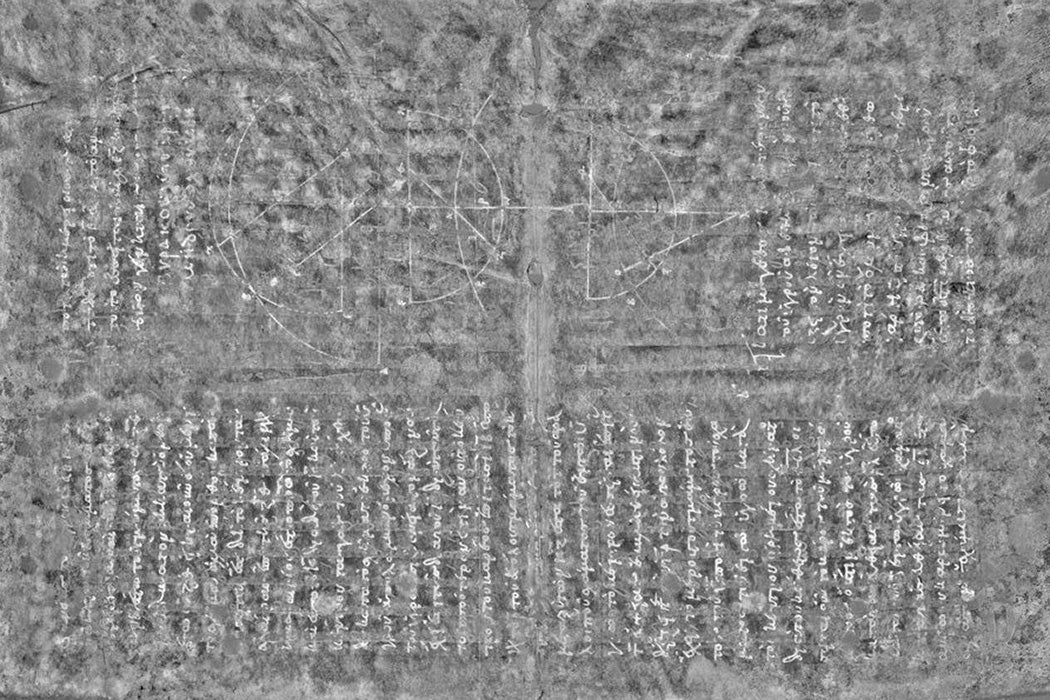In 1907, Johan Ludvig Heiberg discovered something unexpected in a Byzantine prayer book. Beneath the prayers, in faded lettering, he recognized the words of Archimedes. The book held several lost texts by the ancient Greek mathematician, which were erased sometime in the thirteenth century. Heiberg began photographing and transcribing them, but the book went missing after World War I.
More than ninety years after Heiberg’s discovery, the book resurfaced in an auction. The buyer paid 2 million dollars for the artifact and donated it to the Walters Art Museum, where classicists including Nigel Wilson finally got the opportunity to study the manuscript. In a 2004 progress report, Wilson describes how technologies such as UV lamps and digital photography allowed researchers to reveal and share lost ancient works.
It was common for scribes to erase texts and write over them in the Middle Ages; this type of manuscript is called a palimpsest. The Archimedes Palimpsest was a treasure trove—Wilson describes finding lost works by Archimedes that included Method, On Floating Bodies, and parts of Stomachion.
Wilson’s enthusiastic report is filled with details about their work. He describes finding diagrams, and points to details in the handwriting that he hopes will help scholars identify the scribe. Through “lengthy examination” of a single passage, Wilson caught an error in Heiberg’s translation of one word that refined the meaning of the passage.
The report includes pictures from the project, as well. One image shows a page where the writing has faded almost completely. In the next image, words appear like magic through the power of digital processing.
To classicist Daryn Lehoux, the Archimedes Palimpsest project demonstrates a larger trend. Over the last several decades, he argues, digital technologies have completely transformed the study of ancient texts and artifacts. Later in the Archimedes Palimpsest project, researchers used x-ray fluorescence to bring out iron in the older ink. This experimentation created techniques that could be applied to studying other texts.
Lehoux describes how researchers also uncover secrets in physical artifacts using new technologies. X-ray tomography and software tools like polynomial texture mapping helped researchers get a better look at inscriptions on the famous Antikythera Mechanism, for instance.
Weekly Newsletter
But the impacts of the digital revolution go beyond the initial study of these objects. The Archimedes Palimpsest project published their images of the manuscript online. Scholars shared images of the Antikythera Mechanism, allowing others to study the “remarkable astronomical computer” without visiting it in-person. To Lehoux, “this is the most important point: this work can be done from virtually any office, anywhere in the world.”
Imaging technologies have enabled scholars to make new discoveries and to re-evaluate ancient history in a new light. In many cases, they also make this work more available to the rest of us—allowing us to learn more about the active and ongoing study of historical texts.







